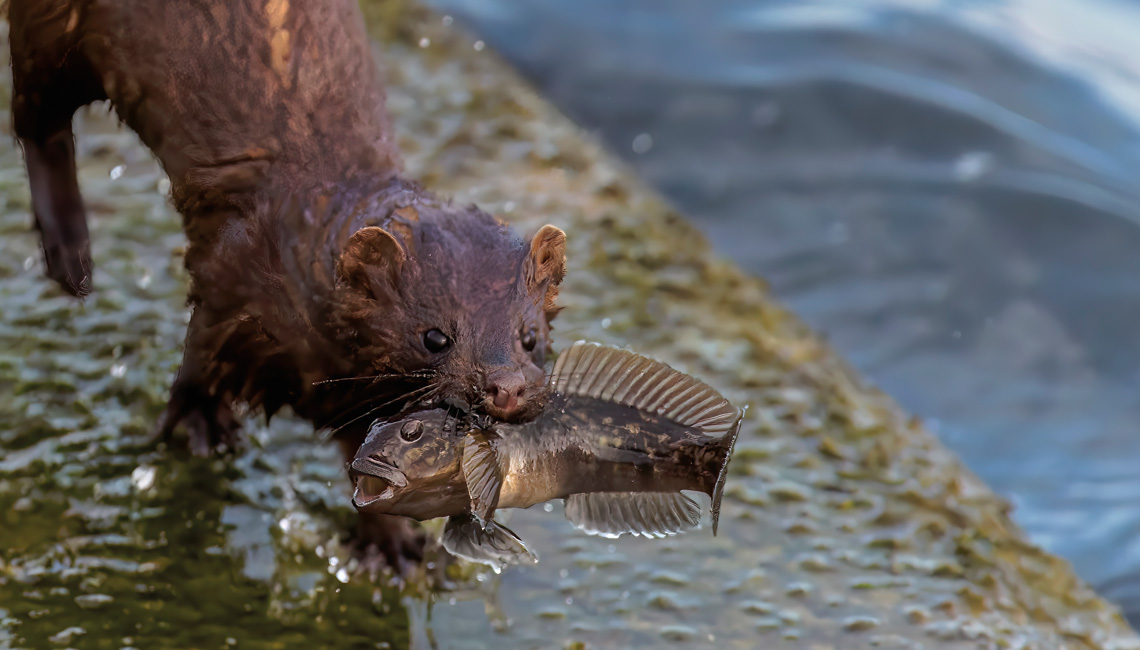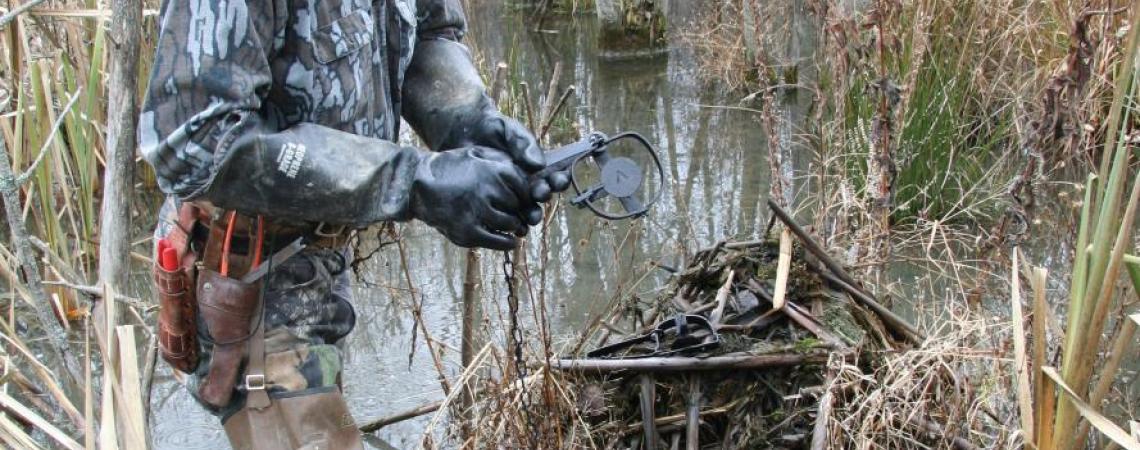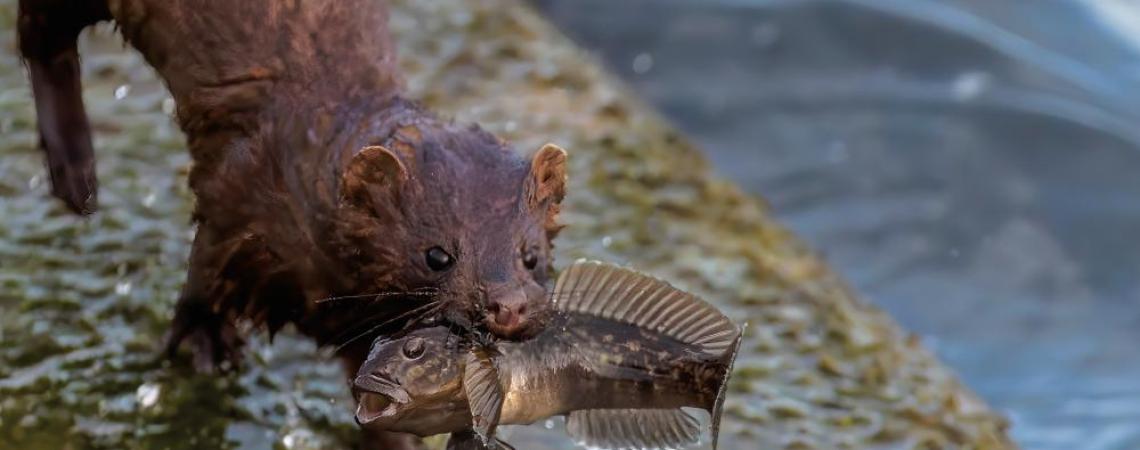There is a pair of serial killers on the loose in the hinterlands of Ohio. The male, with his weasel-like face and small, black, beady eyes, looks menacing; his girlfriend, similar in appearance but only about half his size, is just as bloodthirsty.
A modern-day Bonnie and Clyde? Well, not exactly; you won’t see their pictures on a wanted poster on the wall at the post office. They’re American mink — and the Buckeye State is full of them.
Of course, humans have little to worry about from mink, as they weigh only a pound or two. But they are such fierce, aggressive carnivores that they regularly take down animals twice their size — muskrats, for example.
A trapper searches for signs of mink and other furbearers along an Ohio stream (photo by W.H. "Chip" Gross).
In general, the weasel family has a dubious reputation, particularly its scientific subfamily Mustelinae, which in Ohio includes not only mink but also ermines, least weasels, and long-tailed weasels. Adding to this foursome’s loathsomeness is the fact that they smell bad, emitting a strong, musky odor from anal scent glands, which they use for marking territory or attracting a mate.
A mink hunting along a river or stream bank is the epitome of high-energy efficiency. Using a combination of its eyes, ears, and nose, the mink intensely investigates absolutely every hole, nook, and cranny for potential prey. And once an unfortunate victim is located, the mink attacks immediately and with great speed. Biting the prey animal behind the head or back of the neck with needle-like incisors, the mink then wraps its body around the victim and tenaciously holds on with its feet and legs until the animal dies.
But what mink are most notorious for is what wildlife biologists call “surplus killing,” slaughtering more animals than they can possibly eat at any one time. It’s many a farmer who has had a mink slip into the henhouse overnight and kill every last chicken. Sally Carrighar, in her classic 1945 nature book titled One Day at Teton Marsh, describes the behavior.
“He [the mink] must constantly spend his energy … to stop other animals’ lives … find the motion of fish, mouse, frog, bird, or other creature and end it! A few he would eat; more would be cached.”
Biologists are quick to caution against anthropomorphizing — attributing human traits, characteristics, or thoughts to animals, wild or domestic. For instance, mink do not kill with malice; it’s simply what they do, how they’re genetically wired to function in the wild. No matter what we humans may think, mink and other predators have important roles to play in the natural world.
Considered a valuable furbearer, mink have been sought for centuries throughout North America for their extremely soft, luxurious, chocolate-brown pelts, and Ohio is a top producer. The annual trapping season begins early in November and lasts through late winter, when pelts are most prime.
Mink are common statewide, but are not easily spotted, as they’re mainly nocturnal and crepuscular (active at night, dawn, and dusk). Your best bet to catch a glimpse is to keep your eyes peeled while hiking near the shores of water sources: rivers, streams, lakes, ponds, swamps, marshes, etc. If you are lucky enough to catch a quick glimpse of this small, semiaquatic predator, it probably won’t be for long, as mink are secretive and seldom spend much time in any one area.
W.H. “Chip” Gross is Ohio Cooperative Living’s outdoors editor. Email him with your outdoors questions at whchipgross@gmail.com. Be sure to include “Ask Chip” in the subject of the email. Your question may be answered on www.ohiocoopliving.com!











